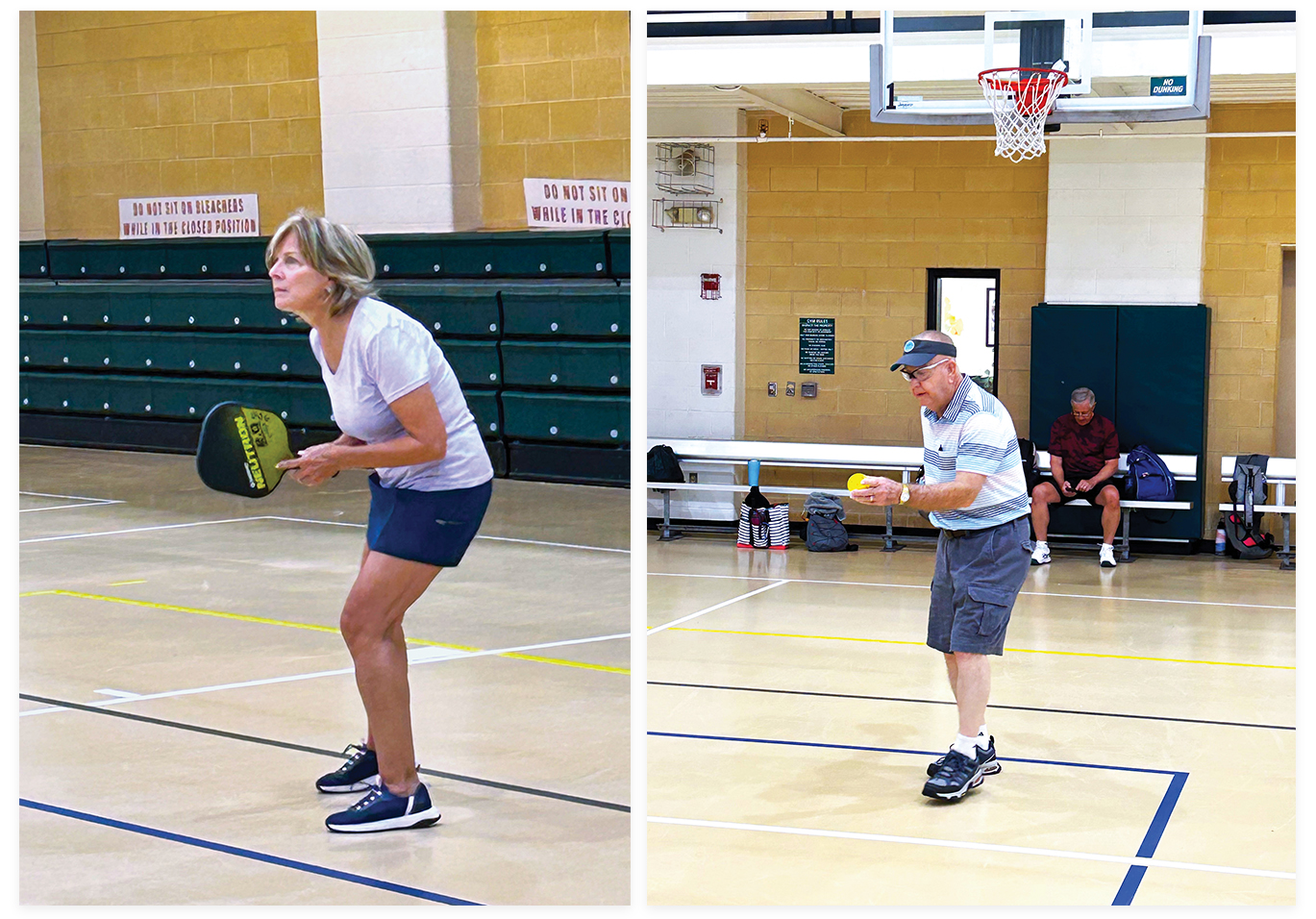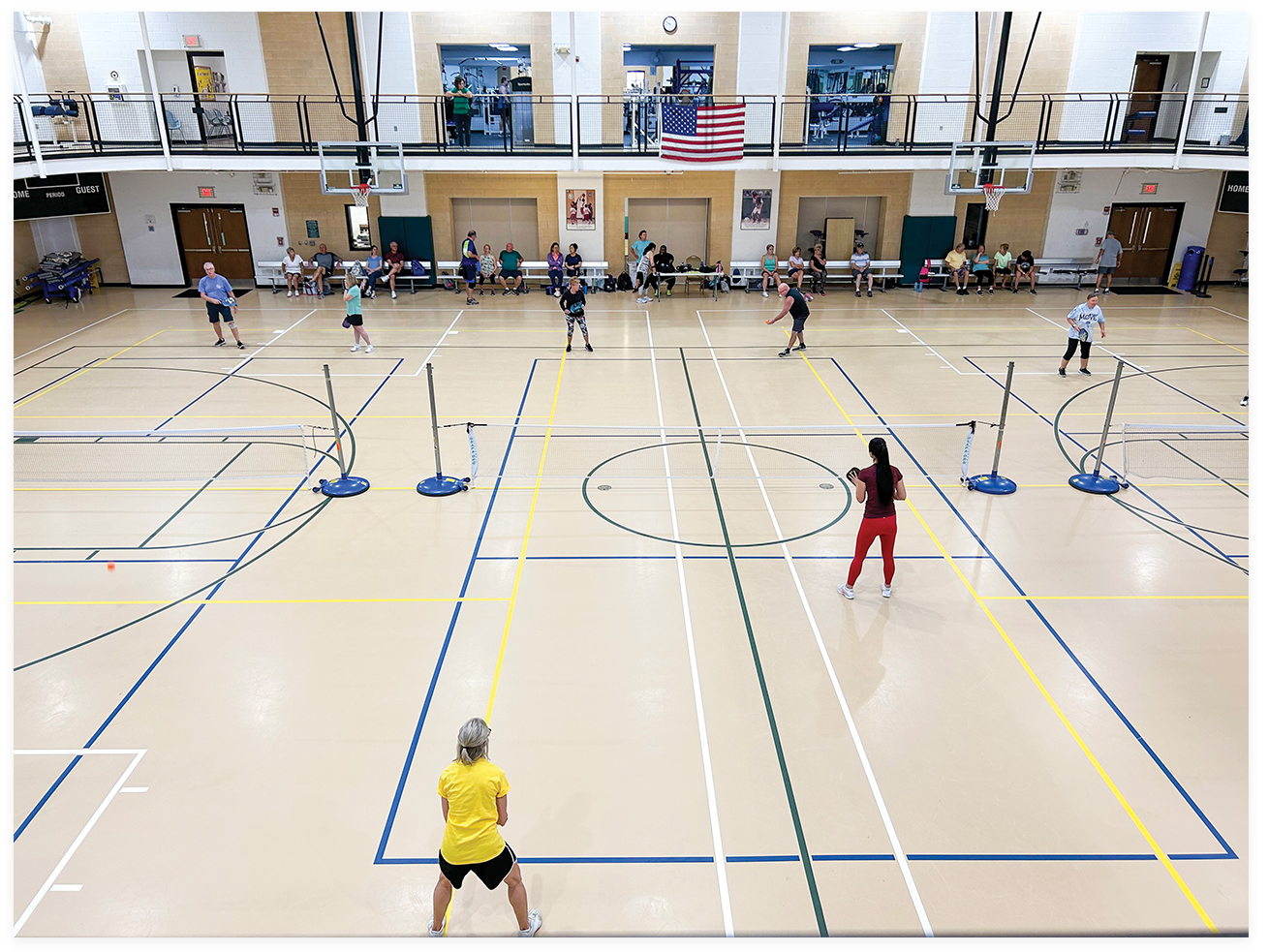Pickleball is the fastest growing sport in the U.S., and along the Grand Strand

The once unfamiliar “thwack” of a hard rubber ball against a hard plastic paddle is resonating more regularly around the Grand Strand as pickleball courts and their devotees are popping up indoors and out, seemingly everywhere.
The game, a cross between Ping-Pong, badminton, and tennis, started some 60 years ago in a Washington State backyard by amateurs looking for some family fun. The game grew slowly and steadily until the mid-2000s when it skyrocketed in popularity. Covid brought a new surge of outdoor pickleball courts and players around the U.S., further expanding the game’s reach. According to the USAPA (USA Pickleball Association), participation in the sport has been growing rapidly in recent years, with an estimated 4 million players in the U.S. alone. Even The Tennis Channel (www.tennischanel.com) is in on the national obsession, live streaming pickleball tournaments and archiving select pickleball games.
As was true around the country and along the Grand Strand, retirees, snowbirds, and other seniors were the first to play, though the player demographics have been consistently skewing younger each year.
“I started a year or two before the pandemic kicked in,” says pickleball entrepreneur Brandon Mackie, co-founder and owner of Pickleheads.com, a website dedicated to the game and its spread.
“The 18- to 24-year-old segment is the fastest growing in the sport,” he continues, “and for the first time just last year the average age of the player dropped below 40 years old. This sport is rapidly getting younger.”

In visiting Myrtle Beach’s Pepper Geddings Recreation Center pickleball courts, or those at Crabtree Gym in The Market Common, however, the observation is that the game is still more popular with the 60-plus crowd, with many active participants in their 70s and 80s, and a select few beyond that. But why?
Most agree that the appeal of the sport across all age groups, but especially among seniors, is that the game is easy to learn and play, even for the inexperienced, and offers health benefits well suited to all ages. Depending on how hard you go at it, a typical 30-minute game can burn between 200 and 350 calories, and provide excellent cardio and aerobic activity as well. The pickleball groups that meet regularly, often four or five times each week, are very sociable, very relaxed and very inclusive.
“No one ever said their first-time playing golf, ‘That was so much fun, I can’t wait to play again,’” quips Mackie, “but pickleball is different; it’s fun from the very first game. It gets people coming back. Plus, there’s plenty of time on the side of the court waiting to play, so it’s as much a social outlet as it is a sport.” There are levels of play, too.
At Pepper Geddings, each Tuesday and Thursday is dedicated to the casual, non-competitive player, while Mondays, Wednesdays, and Fridays cater to the more competitive groups, but you’ll always find a wide range of abilities on any given day. Tennis players, or anyone who’s ever played tennis, even informally, will have an advantage as pickleball newbies; as the backhands and forehanded strikes on the ball are very tennis-like.
Could pickleball become an intergenerational family sport?
“Honestly, the game spans all generations,” says Mackie. “I see 15-year-olds talking with 70-year-olds and all playing together.”

More than just intergenerational, pickleball is already also a multi-gender game. Casual observance of active games along the Grand Strand reveal an almost equal mix of men and women, which, at the very least could be considered a rarity in the sporting world. Recently, pickleball statisticians have conducted extensive surveys and found 61 percent of players are men and 39 percent are women, and that more than 4 million players play at least once a month, though many millions play multiple times each week.
Bob Hines, 76, is a regular pickleballer, and can usually be found at Pepper Geddings, often five days per week, and he plays for several hours on each visit. Hines is an Ohio snowbird and longtime pickleballer.
“I first came to Pepper Geddings to run around the [indoor] track,” he says, and I saw people playing pickleball and it looked like fun. I decided to try it and found everyone really friendly, and I loved the game. That was 14 years ago. Now I live and breathe to play pickleball.”
Liz Kirk of Myrtle Beach, 68, says she’s been playing for a year.
“I’d heard it was fun,” she says, “but I didn’t play years ago because I’d also heard it was just for seniors. Eventually, I tried it, and now I’m hooked. I love starting my day with pickleball. It sets me up, energizes me.”
With the speed of the sport’s growth, and the sheer numbers of players, somebody somewhere will complain about something.
A few detractors of the sport have noted that pickleball’s noise level at outdoor hybrid tennis/pickleball courts is significantly louder than tennis, and that daylong and evening outdoor play disturbs the peace. Some communities have mounted campaigns to ban the sport altogether. Mackie doesn’t see this as a long-term or terribly widespread problem, and one that only applies to outdoor courts, as inside court noise levels are not a concern.
“I think technology will play a role in solving the problems,” he says. “Soundproofing technology – how the paddles and balls are made, too, will change in time, reducing the [decibel level]. When parks and rec officials see all the increase in traffic, and especially older folks outside, getting exercise, being social, they’re thrilled. Pickleball helps fulfill their mandates. And ultimately that counts more than one person across the street who’s angry about it.”
Little fuss has been made locally, however with the sport’s growing popularity, that may change.
With no end in sight for the game that’s sweeping the nation, and here in our little slice of paradise, too, it seems pickleball will continue to attract new players, young and old, who are finding places close to home to try their hand. The website Pickleheads.com currently lists 17 pickleball court locations in the region, though some are in private communities. Call ahead or check the website carefully, as some courts require you to bring your own portable nets, paddles, and balls, etc.
A great place to start your own pickleball adventure would be during a beginner session at the centrally located Pepper Geddings Recreation Center (3205 N. Oak St., Myrtle Beach). Use fees start at $3 per day and long-term memberships are available. Loaner paddles and balls are available for free, along with a welcoming pickleball community happy to see even first-timers. Bonus: Your entry fee gets you use of the entire facility, including men’s and women’s locker rooms, weight and cardio rooms, a large pool with dedicated lap lanes, indoor running court, and more. The pickleball hours are currently 8:30 a.m. to 12:30 p.m.
The Beach Church (557 George Bishop Pkwy., Myrtle Beach) offers free pick-up pickleball games on three indoor courts, each Monday and Wednesday from 9 a.m. to noon. Bring your own regulation paddles and balls and consider a monetary donation of your choosing.
Additionally, several area churches, the Carolina Forest Rec Center, the Midway Memorial Park (Myrtle Beach), the J. Bryan Floyd Community Center (North Myrtle Beach), Crabtree Memorial Gym (The Market Common), the YMCA (Myrtle Beach), and other locations offer the sport.
Wherever you choose to pickle your fancy, know you’ll be in good company with generally friendly folk who like to socialize and get a little exercise while they’re at it. A pickle a day may just help keep the doctor away.